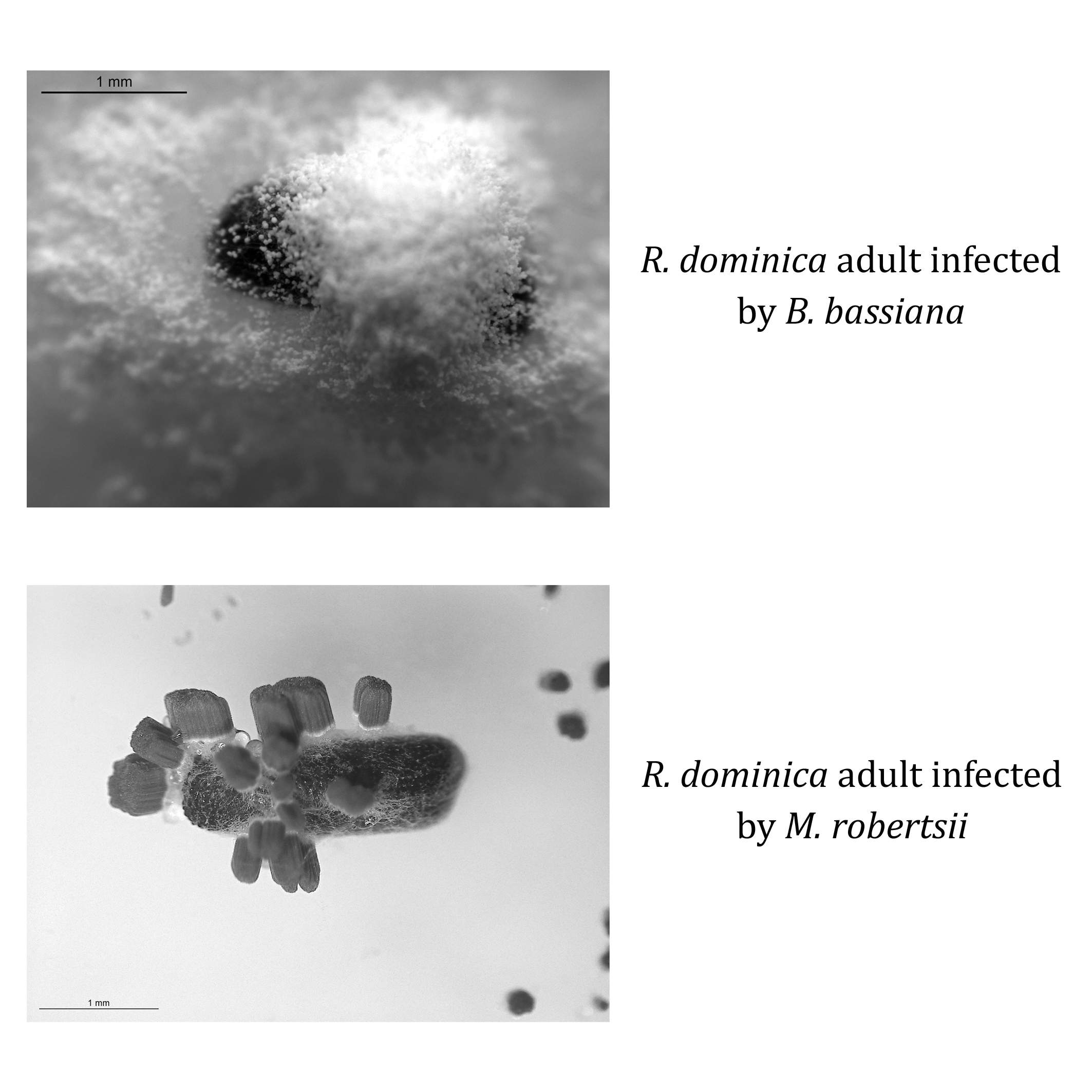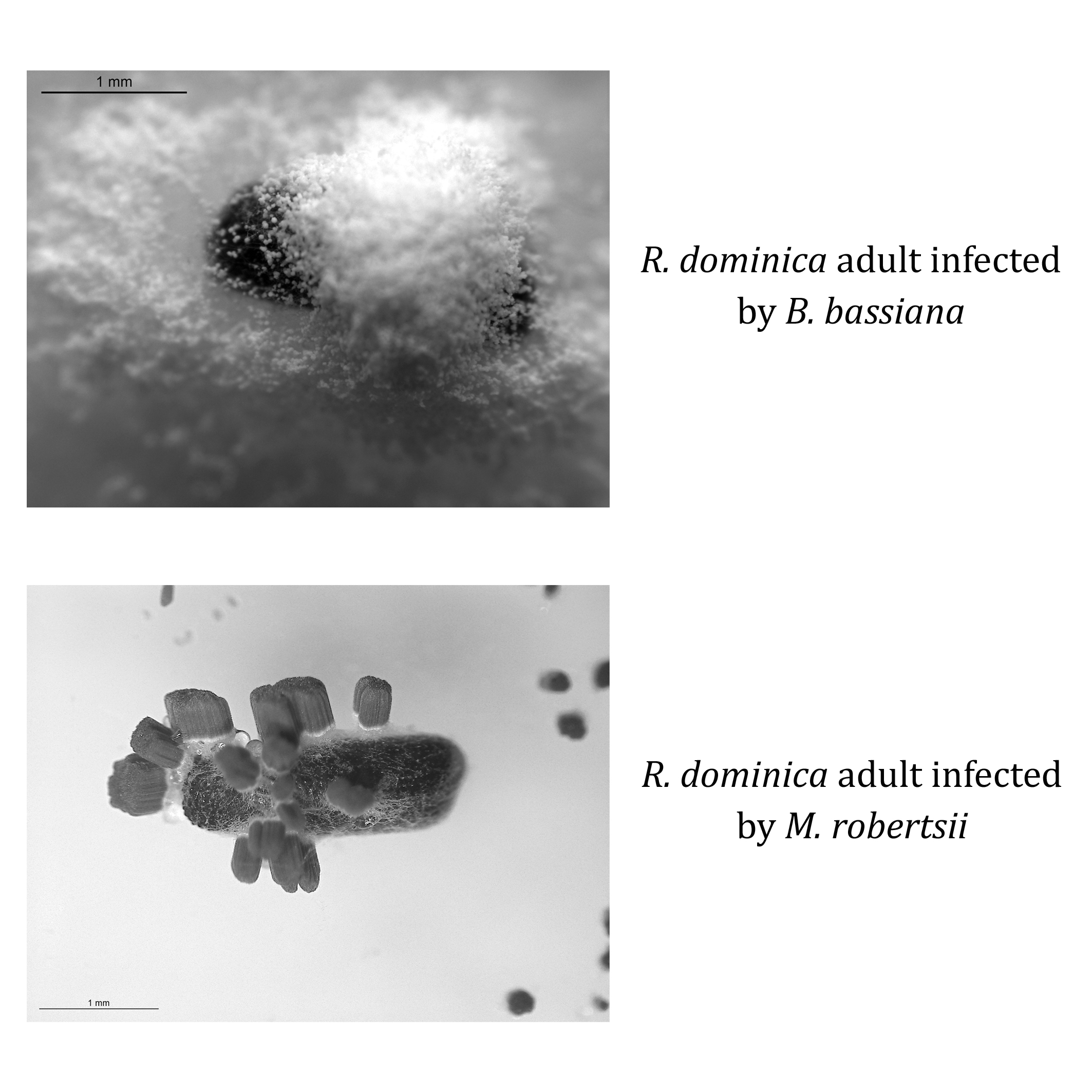Efficacy of entomopathogenic fungi against Rhyzopertha dominica (Fabricius) (Coleoptera: Bostrichidae) under laboratory conditions
Palabras clave:
control biológico, Beauveria bassiana, granos almacenados, Rhyzopertha dominica, control alternativoResumen

The aim of this study was to evaluate the efficacy of 10 isolates of entomopathogenic fungi as biocontrol agents against Rhyzopertha dominica. The isolates used were Beauveria bassiana (CEP 545, CEP 560, CEP 567), Metarhizium robertsii (CEP 381, CEP 401), M. anisopliae sensu lato (CEP 615, CEP 616, CEP 617) and Cordyceps (=Isaria) fumosorosea (CEP 303, CEP 309). Insects were sprayed with a conidial suspension of each fungus and incubated for up to 15 days under laboratory conditions. The percentage of mortality and the median survival time (MST) were estimated. Beauveria bassiana caused the highest mortality (47-65%) whereas the other fungal isolates caused a maximum of 21%. The isolates of B. bassiana CEP 545 and CEP 567 showed a MST of 8 and 9 days, respectively. Among all the tested isolates, B. bassiana CEP 545 resulted as the most efficient isolate as a biocontrol agent. The median lethal concentration (LC50) of this isolate was calculated with five concentrations within day 15 after treatment. The mortality increased with the highest concentrations and the LC50 was estimated in 9.54x109 conidia mL-1. This study demonstrated that some B. bassiana isolates, especially CEP 545, could be used as biocontrol agents against R. dominica.
Highlights
- The B. bassiana native strains used in this research, especially CEP 545, showed high mortality rates and low LT50.
- All the fungal isolates evaluated decreased the survival rate of R. dominica.
- The percentage of mortality with B. bassiana CEP 545 increased as the concentration increased.
Descargas

Descargas
Publicado
Cómo citar
Número
Sección
Licencia
Aquellos autores/as que tengan publicaciones con esta revista, aceptan las Políticas Editoriales.










.jpg)




